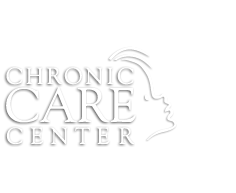Diabetes is currently the fastest growing disease in the world. According to the International Diabetes Federation (IDF) 9.2% of the adult population in the Eastern Mediterranean are affected by Diabetes. A sedentary lifestyle and bad eating habits are the 2 risk factors for the increasing prevalence of Diabetes. The serious long term consequences of uncontrolled Diabetes include heart attack, stroke or kidney problems.
Type 1 Diabetes cannot be prevented till now but we can prevent its complications: (acute complications like hypoglycemia and hyperglycemia and long term complications like retinopathy, nephropathy and vasculopathy).
Type 2 Diabetes can still be prevented through lifestyle adjustment: regular exercise and healthy diet. People with type 2 Diabetes may not detect the symptoms at early stage and only discover they are diabetic following a routine investigation or a blood test prior to some surgery.
- The Center's specialists are developing a Diabetes Prevention Program for all types of Diabetes, aiming to:
- Promote early detection of Diabetes through community education about early signs and risks factors.
- Increase awareness concerning complications of Diabetes: (neuropathy, retinopathy, nephropathy and vascular complications).
- Spread community awareness about the importance of a healthy and balanced diet and its role in preventing Diabetes.
- Encourage sports and physical activities.
- Respect Diabetics rights and promote laws to prevent all kind of discrimination.
- Develop statistics and accurate data on the incidence of Diabetes.
- Disseminate the publication and recent studies about Diabetes.
This program seeks to fight against this looming pandemic. It will be implemented in collaboration with all concerned governmental and private organization mainly the Ministry of Public Health, Ministry of Social Affairs, Ministry of Sports, Ministry of Education and Diabetes Endocrinology Society, Community Health centers and others.
- Practical recommendations:
Know Diabetes risk factors:
The risk factors for type 2 Diabetes include:
- Overweight (BMI>27 Kg/m2)
- Family history of type2D in first degree relatives
- Sedentarity (lack of physical activity)
- Hypertension
- Dyslipidemia (HDL-cholesteroles<35, Triglycerides > 250 mg/dl)
- Women with polycystic ovaries
- Delivery of babies > 4kg of weight
- Belonging to a race/ethnicity with a high incidence of T2D
- Previous abnormality of glucose tolerance
For early detection of Diabetes:
- In the absence of risk factors, screening is recommended every 3 years, starting at age 45.
- In the presence of one or more risk factors screening is recommended at presentation.
Screening includes any of the following tests (confirmed twice):
- Fasting plasma glucose
- Normal < 100 mg/dl
- Diabetes > 126 mg/dl
- Plasma glucose 2hours after oral hyperglycemia (75 g glucose)
- Normal < 140 mg/dl
- Diabetes > 200 mg/dl
- HbA1c
- Normal < 5.7%
- Diabetes > 6.5%
Individuals with fasting glucose100-126 mg/dl, 2 hours glucose140-200 mg/dl or HbA1c 5.7-6.5% are considered predisposed and at increased risk of developing T2D in the future.
Know the symptoms of Diabetes:
Symptoms of diabetes indicating immediate medical consultation:
- Polyuria (frequent urination)
- Polydipsia (excessive thirst)
- Polyphagia (increase appetite )
- Weight loss
Prevent acute and chronic complications of Diabetes:
Poorly controlled diabetes predisposes to acute and chronic complications:
- Acute complications : Hyperglycemias with ketosis
- Chronic complications :
- Retinopathy
- Nephropathy
- Neuropathy
- Atherosclerosis (coronary and peripheral)
- Foot ulcers
Strict glycemic control has been demonstrated to avoid the onset and to delay the progression of all complications.
Create your healthy-eating plan:
- Your diabetes diet is simply a healthy-eating plan that will help you control your blood sugar.
As stated by Mayo Clinic,
A diabetes diet simply translates into eating a variety of nutritious foods in moderate amounts and sticking to regular mealtimes.
Rather than a restrictive diet, it is rich in nutrients and low in fat and calories, with an emphasis on fruits, vegetables and whole grains. In fact, a diabetes diet is the best eating plan for most everyone.
- Recommended foods
Quality is much more important than quantity. Make your calories count:
- Healthy carbohydrates. During digestion, simple carbohydrates and starches complex carbohydrates break down into blood glucose. Focus on the healthiest carbohydrates, such as fruits, vegetables, whole grains, legumes (beans, peas and lentils) and low-fat dairy products.
- Fiber-rich foods. Dietary fiber includes all parts of plant foods that your body can't digest or absorb. Fiber can decrease the risk of heart disease and help control blood sugar levels. Foods high in fiber include vegetables, fruits, nuts, legumes (beans, peas and lentils) and whole-wheat flour.
- Eat heart-healthy fish at least twice a week. Fish can be a good alternative to high-fat meats. They have less total fat, saturated fat and cholesterol than do meat and poultry. Fish are rich in omega-3 fatty acids, which promote heart health by lowering blood fats called triglycerides. However, avoid fried fish.
- 'Good' fats. Foods containing monounsaturated and polyunsaturated fats - such as avocados, almonds, pecans, walnuts, olives, and canola, olive and peanut oils -can help lower your cholesterol levels. Eat them sparingly, however, as all fats are high in calories.
- Foods to avoid
Diabetes increases your risk of heart disease and stroke by accelerating the development of clogged and hardened arteries. Foods containing the following can work against your goal of a heart-healthy diet.
- Saturated fats. High-fat dairy products and animal proteins such as beef, hot dogs, and sausage... contain saturated fats. Get no more than 7 percent of your daily calories from saturated fat.
- Trans fats. These types of fats are found in processed snacks, baked goods, shortening and margarines and should be avoided completely.
- Cholesterol. Sources of cholesterol include high-fat dairy products and high-fat animal proteins, egg yolks, shellfish, liver and other organ meats. Aim for no more than 200 milligrams (mg) of cholesterol a day.
- Sodium. Aim for less than 2,000 mg of sodium a day.
- Putting it all together: Creating a plan
There are a few different approaches to creating a diabetes diet that keeps your blood glucose level within a normal range. With a dietitian's help, you may find one or a combination of methods that works for you.
- Counting carbohydrates. Because carbohydrates break down into glucose, they have the greatest impact on your blood glucose level. It's important to make sure your timing and amount of carbohydrates are the same each day, especially if you take diabetes medications or insulin. Otherwise, your blood glucose level may fluctuate more.
A dietitian can teach you how to measure food portions and become an educated reader of food labels, paying special attention to serving size and carbohydrate content. If you're taking insulin, he or she can teach you how to count the amount of carbohydrates in each meal or snack and adjust your insulin dose accordingly.
- The exchange system. A dietitian may recommend using the exchange system, which groups foods into categories such as carbohydrates, meats and meat substitutes, and fats.
One serving in a group is called an "exchange" and has about the same amount of carbohydrates, protein, fat and calories - and the same effect on your blood glucose - as a serving of every other food in that same group. So, for example, you could exchange - or trade - one small apple for 1/3 cup of cooked pasta, for one carbohydrate serving.
- A sample menu
Your daily meal plan should take into account your size as well as your physical activity level. The following menu is tailored for someone who needs 1,200 to 1,600 calories a day.
- Breakfast. Whole-wheat pancakes or waffles, one piece of fruit, 1 cup of low-fat milk.
- Lunch. Chicken kabob, 1/2 cup of steamed broccoli, 1/2 cup of cooked rice, 1/2 cup of juice.
- Dinner. Vegetarian Pasta prepared with broccoli, carrots, zucchini and Parmesan cheese, 1 cup of low-fat milk.
- Snacks. Six homemade crispy corn tortilla chips, 1/2 cup fresh vegetables with a seasoned garlic sauce.
Practice sport and exercise:
It is recommended for most people especially for individuals at risk or with type 2 Diabetes, to practice sport.
- Sport and exercise are one of the keys to successful Diabetes treatment. It is an effective tool for preventing type 2 Diabetes and potential diabetic complications.
- Sport and exercise promote weight loss and maintenance, help with stress management, and facilitate muscle and hepatic cells glucose uptake and increase insulin sensitivity.
- At least, 150 minutes per week should be devoted to moderate physical activity.
- Moderate activities can include: Walking, jogging, swimming, cycling, aerobic exercises, dancing and gardening.
- The physical activity should be distributed over at least three days per week.
- Before starting an exercise program, patients with Diabetes should undergo medical evaluation for macrovascular and microvascular complications that exercise can exacerbate.
- In the absence of contraindications, people with type 2 Diabetes should perform resistance exercises three times per week, targeting all major muscle groups.
- A medical evaluation and clearance from the physician are necessary before beginning a more vigorous and intensive program.
- Team sports can increase compliance and ensure safety during exercise.
- If diabetic patients want to participate in a competitive sporting event, they should work with a professional to develop an appropriate training regimen.
- In individuals without Diabetes, exercise - induced hypoglycemia is rare. For patients with type 2 Diabetes, using insulin or some oral medications, hypoglycemia can occur during prolonged exercise. Monitoring BG level is recommended before and during exercise to prevent it.
commonly occurs in childhood, rarely in adults.
- The only treatment until now is insulin (injections-pump)
- Blood glucose self-monitoring.
- Diet.
- Exercise.
- Not enough food
- Delayed or missed meals
- High dose of insulin
- Increased activity (exercise)
- Presence of renal failure
- Alcohol intake
- Change in injection site
- Hunger
- Tremor
- Dizziness.
- Sweating.
- Give the conscious patient 15-20g of glucose or simple sugar and repeat after 15 min if necessary. Follow with long - acting carbohydrates (bread, plain biscuits, milk)
- If unconscious don’t give anything orally, call the doctor or diabetes educator.
- Untreated diabetes
- Too much food or imbalanced type of food
- Insufficient medication or incorrect dose
- Overuse of particular injection sites
- Poor injection technique
- Reduction of activity
- Infection / illness
- Increase of concurrent medication affecting glycemic control.
- Stress, life changes.
- Polyuria
- Increased urination
- Polydipsia, extreme thirst
- Irritability.
- Visual changes...
- Weakness
- Weight loss
- Adjustments may be required according to identified causes of the high blood sugar levels, regarding food, activity, medication, insulin.
- Test urine for the presence of ketones each time the b blood test is >240 – 300 mg/dl.
- If ketones are present call doctor or diabetes educator.
- Work on acceptance of the child’s situation.
- Help restore balance in the family home, working with all member of the family.
- Trusting the diabetic patient and avoiding over protection/li>
- Work on improving self-esteem
- Treating the diabetic child as an independent person, not different from his siblings or peers and capable to succeed in life.
- On the community level, work with patient’s surrounding (peers, schools, work environments), in order to promote social integration through acceptance.
- Regular follow-ups to provide individual and family support.
- Organizing recreational activities and summer camps, encouraging the exchange of personal experiences.
- Organizing educational sessions about diabetes, to promote awareness.
- Organizing regular parent committee meetings, to discuss problems encountered and support new cases.
- Understand diabetes and its treatment.
- Acquire a good level of scientific knowledge and develop practical skills, concerning insulin treatment, blood glucose self-monitoring, as assets for the prevention of complications.
- Develop decision-making skills, in the matter of adjusting insulin doses, anticipation of scheduled events, such as special occasions or competitive sports, alcohol, smoking.
- Learn how to manage acute complications and reduce their risk (hypoglycemia, hyperglycemia, ketonuria).
- Reduce and prevent long term complications by trying to achieve a tight control of diabetes, and an HbA1c closest to normal (<7%).
- Encourage taking charge of diabetes management, promoting autonomous individuals, to ensure a satisfactory life style.
N.B: Education is given for diabetic patients and their significant others in the center during follow-up visits by using dynamic group and individual interviews.
- Patient assessment
- Evaluating individual dietary habits, lifestyle and physical activity.
- Goal-setting, individualized dietary instruction and periodic evaluation and modification.
- Develop an individualized plan, which meets the nutritional needs of every child with diabetes, ensuring adequate and normal growth and development and limiting glycemic fluctuations by adopting a regular meal distribution pattern.
- Encourage an active lifestyle; regular activity enhances longterm weight maintenance and improves insulin sensitivity, glycemic control, aerobic fitness and selected risk factors.
- Learning how to make healthier food choices, and how to read nutritional labels of food products.
- Since carbohydrate consumption is a strong predictor of glycemic response, learning how to estimate carbohydrates is a good strategy to achieve glycemic control. Counting carbohydrates can be done using both the exchange system or the more advanced carbohydrate counting.
- Develop problem-solving skills: how to interpret blood glucose monitoring results and make adjustments.
- Follow-up visits evaluate the outcome of self- management, supplement nutritional information and problem-solving strategies and modify the diet plan as needed (growth needs, beginning of chronic complications such as nephropathy, other needs).
- Supervising students training in the center, all programs and levels included and assisting them to prepare their papers and studies.
- Participating in training diabetes educators
- Annual conference on the Diabetes International Day, November 14.
- Educational material:






Thalassemia trait is not a disease. People who have thalassemia trait (carriers) carry one thalassemic gene and are completely healthy and live a normal life. However, they can transmit their thalassemic gene to their children. If they get married to a person who carries a thalassemic gene, then their children are at risk of having the disease, thalassemia major. That's why all marriage partners must undergo testing for the carrier state before marriage and before deciding to have children. It is estimated that 3% of the Lebanese population carry the beta thalassemia gene.
Thalassemia Major is a serious inherited blood disorder. Children born with this disorder have severe anemia because they cannot make enough hemoglobin in their blood. They present at about 3 months to 2 years of age with pallor, lack of appetite, loss of activity and abdominal distension. If not treated, they die in the first few years of life from anemia and its complications. If treated, they live a close to a normal life.
- Development of a national education and awareness strategy.
- Design of a “national network of partners and volunteers”.
- Production and dissemination of education and awareness material.
- Building local capacities and skills.
- Launching of well-planned sensitization and awareness campaigns.
- Development and execution of a national screening strategy.
- Reinforcement of the basic underlying concepts.
- Encouraging an effective implementation of the obligatory pre-marital certificate.
- Determination and execution of warranted research studies based on a proper needs’ assessment.
- Encouraging the establishment of a national registry for thalassemia.
- Publication and dissemination of results and recommendations of conducted studies.
Conducting research and statistical studies, through:
- Information about the disease(refer to section about thalassemia).
- Importance of blood donation to support the need of thalassemic patients.
- The paramount importance of the premarital exam and specifically in preventing thalassemia; highlighting the necessity of performing Hemoglobin Electrophoresis.
- Awareness about premarital diagnosis for high risk pregnant women.
- Screening for thalassemia carriers, with a main focus on high risk groups.
- Family planning for parents of thalassemics.
- Counseling of thalassemia carrier couples before marriage.
- Organizing annual conference on the Thalassemia International Day, May 8.
- Patients & parents.
- Extended families (cousins, uncles, 2nde degree relatives …).
- High risk groups.
- Students who visit the Center
- Students in universities, secondary and technical schools.
- Medical Community: students in the health care field, training at the Center, nurses in medical centers & dispensaries.






If you have a specific question about Thalassemia, you
can write us now




